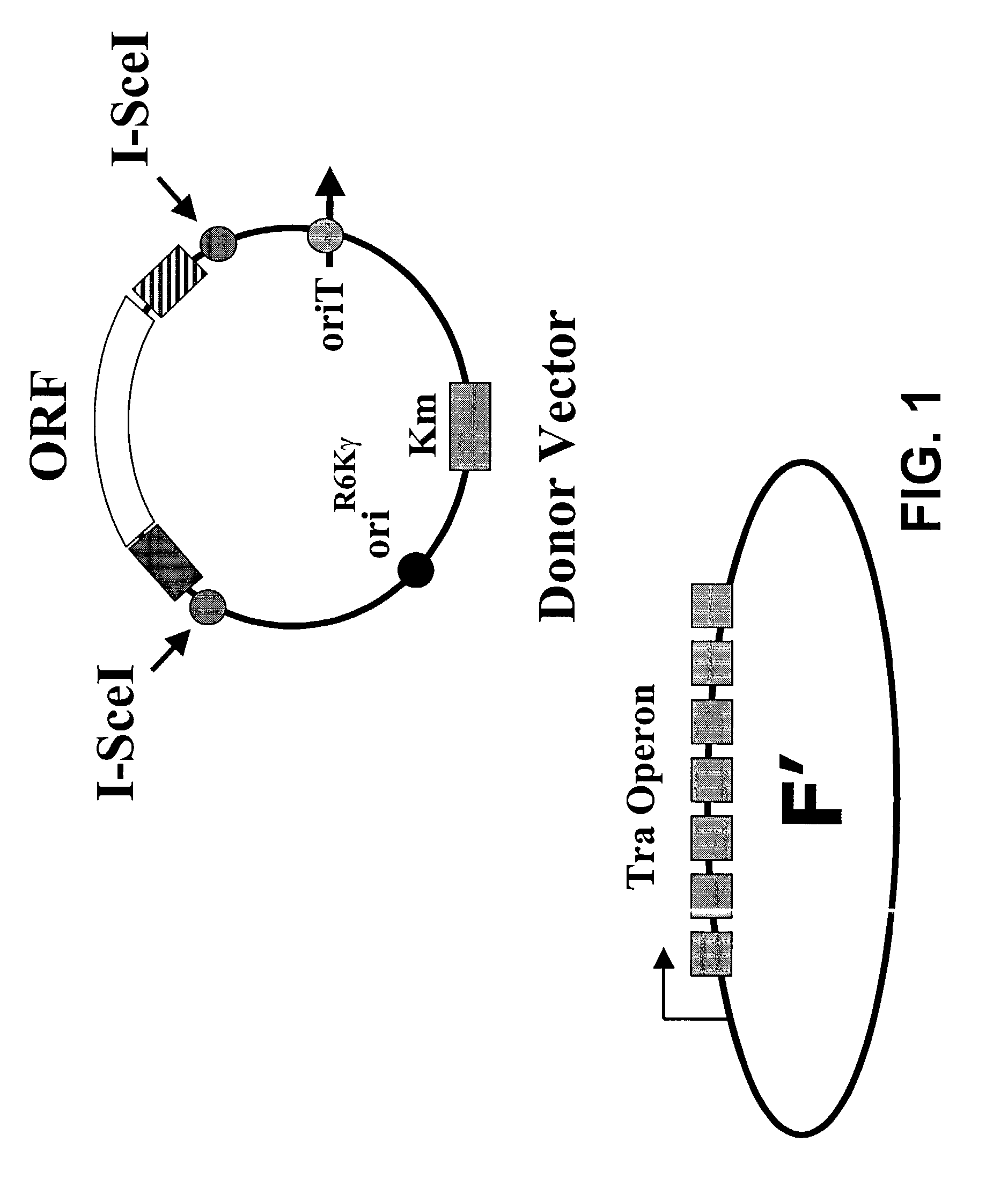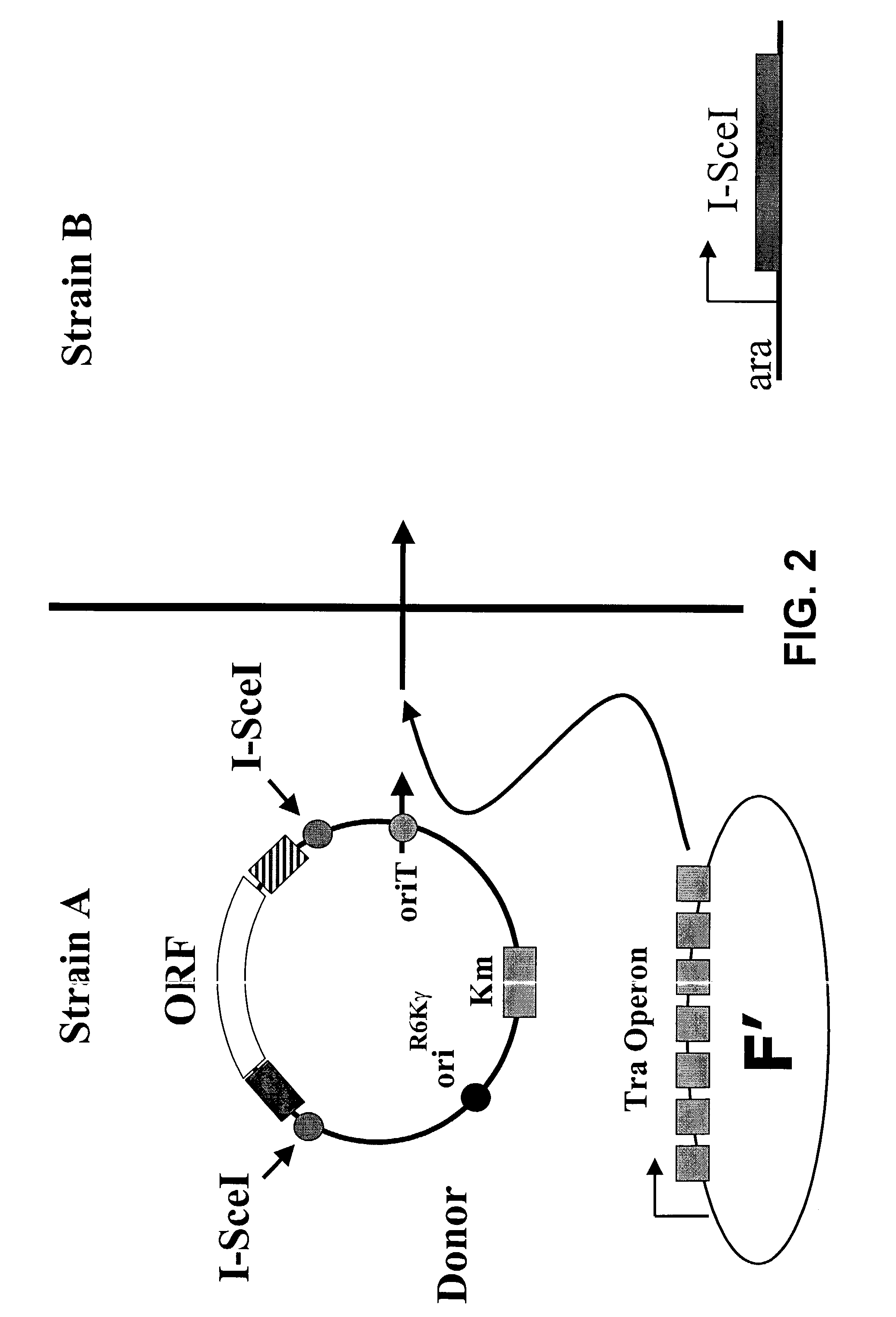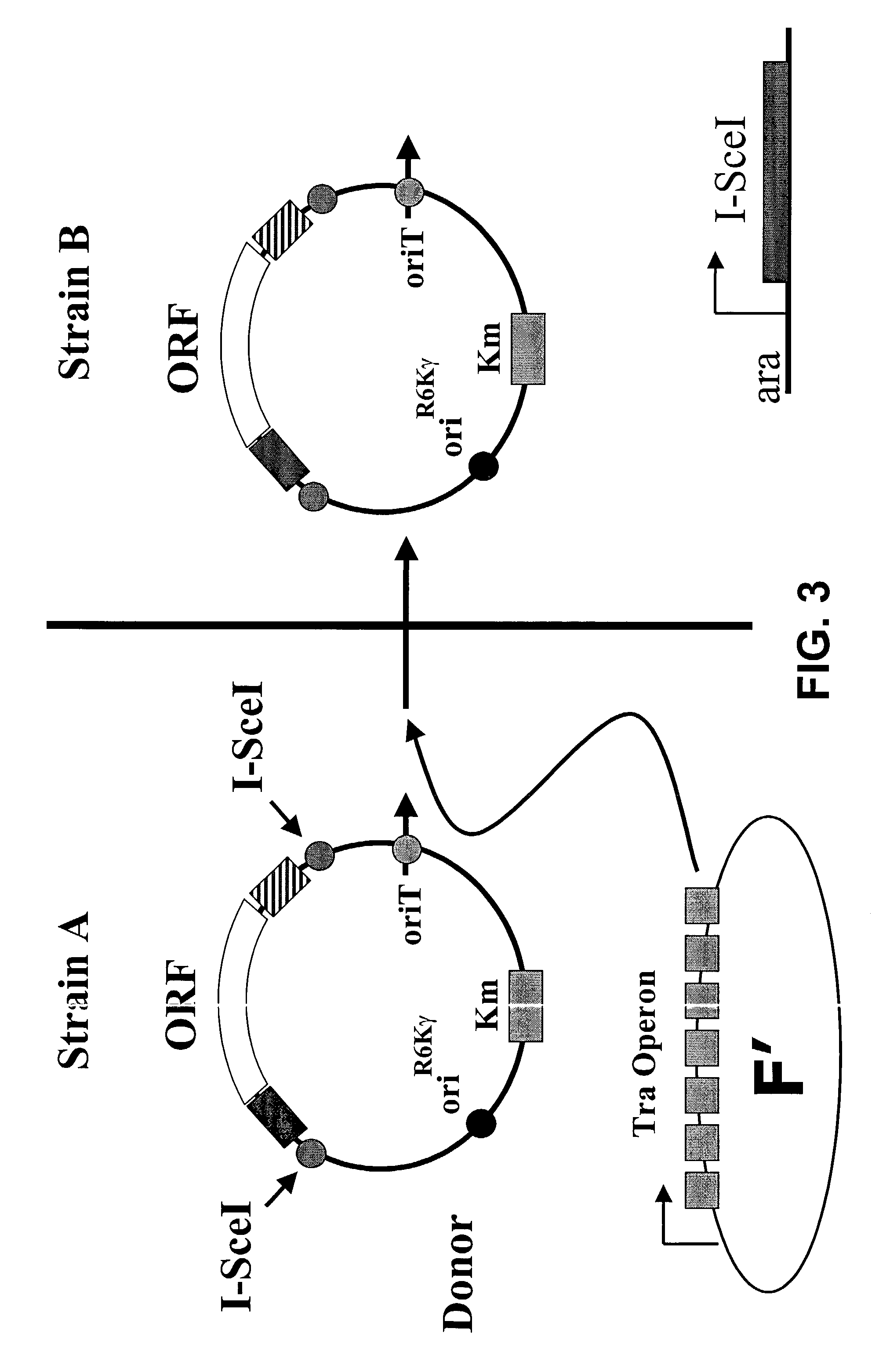In vivo gene transfer
a gene transfer and in vivo technology, applied in the field of molecular biology, cloning, and bacterial genetics, can solve the problem that the donor vector is incapable of replicating in the strain harboring the host vector, and achieve the effect of greater utility
- Summary
- Abstract
- Description
- Claims
- Application Information
AI Technical Summary
Benefits of technology
Problems solved by technology
Method used
Image
Examples
example 1
Donor Vector for ORF Liberation in Strain A
[0126]FIG. 1 illustrates a starting strain A for the embodiment that utilizes bacterial conjugation. In this strain, there preferably is a conjugation system for the transfer of the vector, and multiple conjugation systems are known in the art. In a specific embodiment, there is an F′ and the donor plasmid comprises an origin of transfer that is recognized by the transfer proteins of the F′. In a specific embodiment, the F′ has its origin of transfer deleted so that it can not mate into other strains. The strain also comprises a lambda lysogen carrying the pir-116 gene that supports the replication of the R6K origin on the donor plasmid. The donor plasmid comprises the ORF or the polynucleotide or gene of interest flanked by two different approximately 50 bp sequences that serve as the homology for the subsequent homologous recombination events used to transfer the ORF into a recipient plasmid. The genotype of the strain A is preferably F′ ...
example 2
ORF Transfer by Conjugation Followed by Excision
[0127]FIG. 2 illustrates ORF transfer by conjugation, followed by excision. Upon mixing strain A with strain B, which lacks an F′, the donor plasmid is transferred to strain B by conjugal transfer. Control experiments indicate that upon mixing strains A and B and allowing growth at about 30° C. for about two hours, 10% to 50% of strain B can acquire a donor plasmid. However, in this embodiment, strain B does not support the replication of the donor plasmid, because it lacks the pir1 gene required for the function of the R6Kγ origin to replicate.
example 3
ORF Transfer by Conjugation Followed by Excision
[0128]FIG. 3 illustrates the first step of ORF transfer by conjugation followed by excision, wherein the donor plasmid is transferred into strain B. A skilled artisan recognizes there are well-known methods in the art for bacterial mating, including those comprising liquid media or replica plating.
[0129]Strain B also comprises the I-SceI restriction enzyme under the control of the araB promoter that is inducible when arabinose is added to the media.
[0130]FIG. 4 shows the second step of ORF transfer by conjugation followed by excision. When arabinose is present, the I-SceI enzyme cuts the donor plasmid in two places, liberating the ORF flanked by two distinct 50 bp regions of homology to the recipient vector.
PUM
| Property | Measurement | Unit |
|---|---|---|
| growth temperature | aaaaa | aaaaa |
| length | aaaaa | aaaaa |
| resistance | aaaaa | aaaaa |
Abstract
Description
Claims
Application Information
 Login to View More
Login to View More - R&D
- Intellectual Property
- Life Sciences
- Materials
- Tech Scout
- Unparalleled Data Quality
- Higher Quality Content
- 60% Fewer Hallucinations
Browse by: Latest US Patents, China's latest patents, Technical Efficacy Thesaurus, Application Domain, Technology Topic, Popular Technical Reports.
© 2025 PatSnap. All rights reserved.Legal|Privacy policy|Modern Slavery Act Transparency Statement|Sitemap|About US| Contact US: help@patsnap.com



